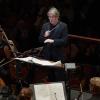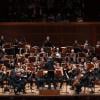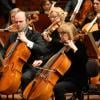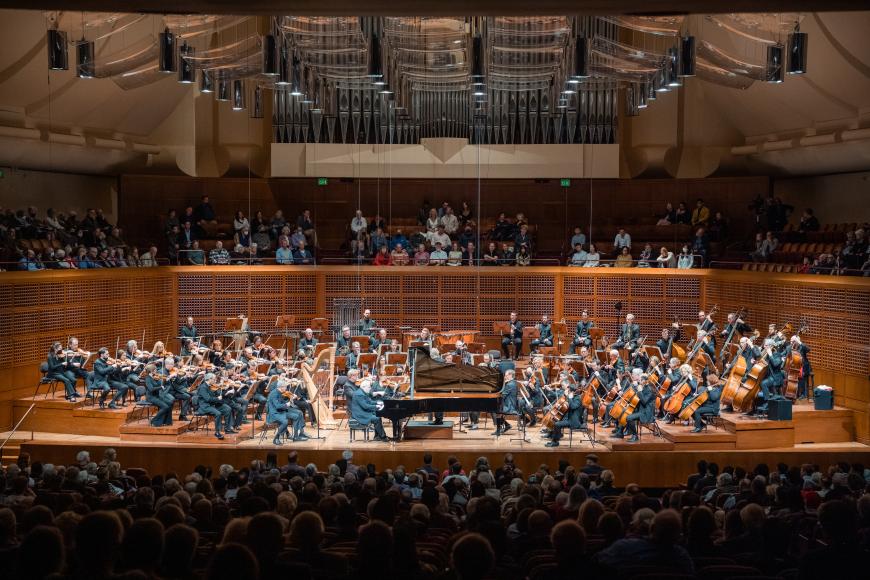
Swedish composer Anders Hillborg came to the San Francisco Symphony last week for the first performance of his Piano Concerto No. 2 on Thursday, Oct. 12. The premiere was conducted by Hillborg’s old friend, Esa-Pekka Salonen, and the solo part was performed by another old friend, Emanuel Ax, for whom the work was written. Hillborg embeds this dedication in the work’s subtitle, “The MAX Concerto,” as in M. (for Manny) Ax.
Hillborg’s trademark sounds, like spectral string sheens and the vigorous snapping of double bass strings against the fingerboard, are there. But the concerto otherwise varies tremendously, though it’s less quirky than other of the composer’s works. The single 22-minute movement is divided into several designated sections, but the piece’s changes of character are so frequent, abrupt, and unpredictable that it is difficult for the listener to detect what point the work has reached.
Ax’s solo part begins with elaborate runs that are ignored by the orchestra. The work briefly threatens to become one of those concertos expending a great deal of effort to very little purpose. But it does not go on that way. Instead, the soloist and orchestra become sensitively responsive to each other. The music’s most remarkable and winning characteristic is the merging of the piano with sections of the orchestra. High jangling notes from the piano are matched with every chiming sound available from the percussion. Little piano motifs are played simultaneously by piccolo or other wind instruments. Active tumbling figures in the piano are set against sheens of string sound.
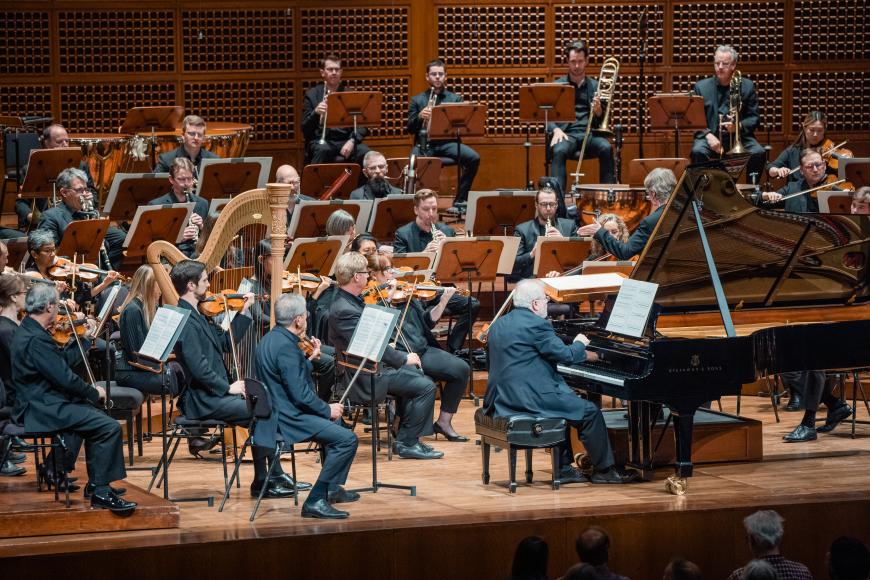
There is a feel of improvisation about it all. As the concerto sorts itself out through these various distinctive sonic environments, most of which recur several times, the piano frequently has long pauses. We are well past the days of the concerto grosso and its formal alternating turns, so these breaks seem as if the composer, in the persona of the pianist, is stopping to think of what to do next. Appropriately for such an approach, the concerto ends softly and enigmatically.
In a preconcert interview, Hillborg described this piece as more accessible than his First Piano Concerto of 23 years ago. This accessibility is most apparent and dramatic toward the middle of the work, when huge consonant horn-based chords overwhelm the sound with the clarity of their harmony.
Throughout the piece, Ax was tireless. He approached complex passages with the sheer enthusiasm of having the opportunity to perform them, and he caressed the lyricism of his part whenever he had the chance. Hilborg is sensitive to the potential danger of the orchestra drowning out the piano, and he avoided this problem entirely. The SF Symphony musicians played marvelously as usual, and Salonen conducted with vigor. The concerto will probably sound different the next time it is heard — Hillborg usually revises new work — but it made an interesting if slightly disjointed impression on first appearance.
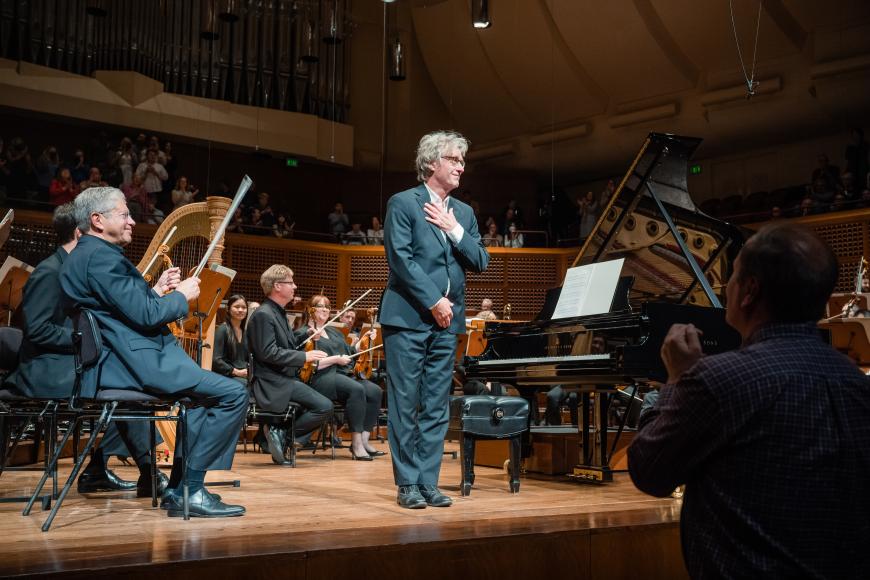
Salonen bookended the concerto with maybe the two most familiar composers in the standard orchestral repertoire, Beethoven and Brahms. The latter’s Variations on a Theme by Haydn was slow and brooding, without losing energy or flow. The wind chorales, emerging from behind the string sound, were particularly lovely.
Beethoven’s Symphony No. 2 was incisive and dynamic, with touches of humor where Salonen unexpectedly extended pauses in the score. This was a fairly lightweight Second, closer to an unusually brusque Mozart symphony than to the full, mature Beethoven roar that Michael Tilson Thomas is prone to in this work. The piece comes out splendidly in either artistic approach. As in the Brahms, the wind chorales were the most attractive part, entirely devoid of the rough sound often heard in Beethoven’s wind passages. Despite one flub in the horns, this was a sterling day for the winds of the SF Symphony.


